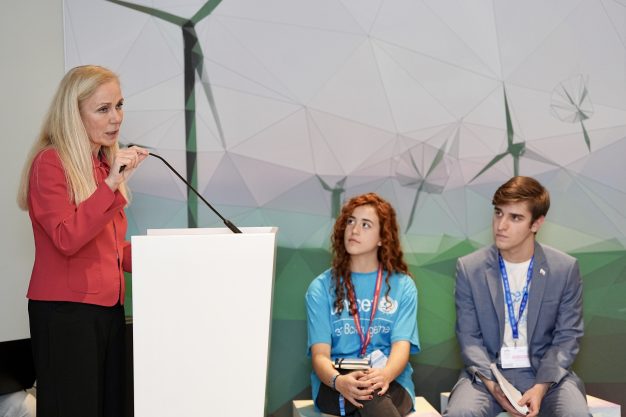
UNICEF: Young people can be ‘agents of change’ in tackling deadly air pollution
A new paper by UNICEF sets out the main sources of air pollution affecting children, and lays out actions which should be taken globally to tackle this critical issue – with young people urged to be active campaigners.
Every child has the right to clean air, says the global children’s charity, and yet every day hundreds of millions of youngsters are breathing in toxic air full of dangerous, life-threatening chemicals.
And because children are so uniquely vulnerable to the damaging effects of air pollution, many are dying young or becoming seriously ill with what are often lifelong conditions.
UNICEF says that the only way to ‘change this reality’ is for society to confront the ‘seven deadly sources’ of air pollution:
- Household air pollution
- Traffic-related air pollution
- Waste-related air pollution
- Industrial air pollution
- Wildfire and landscape fire smoke
- Sand and dust storms
- Secondhand smoke
“These sources are major sources of PM2.5, the most consistent and accurate predictor of poor health outcomes across all age groups, and they also contain other harmful pollutants,” says the charity.
A new policy brief, Clean Air, Healthy Children, An Agenda for Action: Protecting children from seven deadly sources of air pollution, gives an overview of these key sources, backed up with a series of recommendations for governments, caregivers, the private sector and health professionals to adopt.
‘Children should not be treated as early warning systems’
It also includes actions which children and young people themselves can get involved with, and in doing so become ‘agents of change’ on air pollution.
This could include collecting, analysing and sharing data, actively engaging in monitoring air quality in their homes, schools and playgrounds, raising awareness about the causes, and working with local and national government organisations.
“Children are often the first the feel the harmful effects of air pollution, but they should not be treated like early warning systems,” says the briefing.
“They may experience the impacts more acutely, from asthma to developmental issues, but they are also among the more powerful advocates for environmental justice. By equipping them with knowledge and tools, like UNICEF’s toolkit for young climate activists, that has a specific guide on air quality, we can empower the next generation to raise their voices and demand the cleaner, healthier air they deserve.”
The silence has been deafening when it comes to the plight of children
Around 700,000 deaths in the under-5s age group have air pollution as a contributing factor, which equates to around 2,000 children in this age group dying every day as a result of breathing in poisonous air. Air pollution is also linked to around 34 per cent – or 1 in 3 – of pre-term deaths. Even babies who survive the preterm period may face developmental problems and other long-term health issues.
It’s these types of figures which, says UNICEF, means ‘the world has waken up to the fact that we must find ways to reduce pollution if we are to combat climate change and protect biodiversity’.
“Debates and negotiations centred around a just energy transition are driving change…but the silence has been deafening when it comes to the plight of hundreds of millions of children, the majority of whom are living in low- and middle-income countries, who are developing health conditions or dying from diseases linked to air pollution,” says the paper.
Click here for the full briefing.



